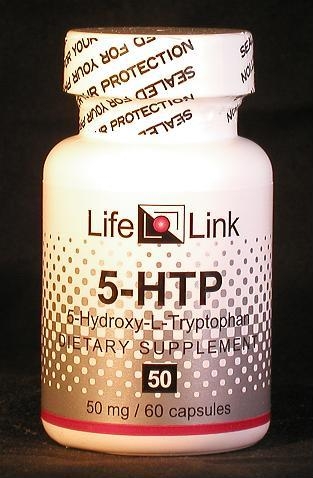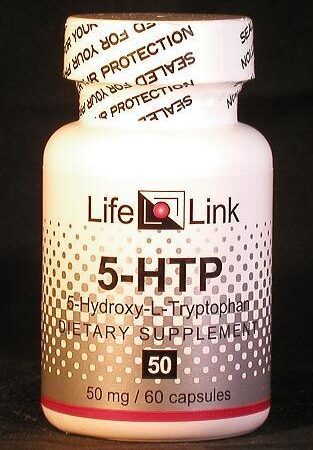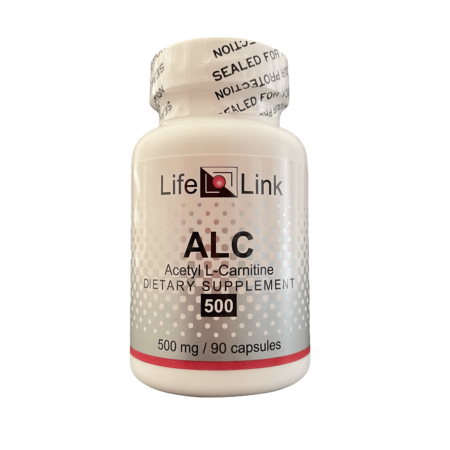Description
Overview
LifeLink’s Alpha-Lipoic Acid clamps down on oxygen-gone-wild
Alpha-lipoic acid (ALA) is a cofactor in several biochemical
processes in the body, including the process by which energy
is extracted from carbohydrates. It is also an antioxidant that
neutralizes several kinds of oxygen radicals and related molecules
— destructive byproducts of the body’s own normal metabolic
activities. Thanks to its antioxidant properties, ALA is nature’s
most powerful defense against oxygen-gone-wild.
ALA has been of great interest to medical biologists since it was discovered in the 1950s. The list of applications to which
ALA has been successfully applied is a long one, and includes:
- Aging, cataracts
- Cancer
- HIV
- Metabolic syndrome, insulin resistance, diabetes, diabetic nerve damage
- Cognitive decline: memory and learning disorders, dementia
- Neurodegeneration: Alzheimer’s, Parkinson’s, Huntington’s, ALS, multiple sclerosis
- Cardiovascular disease, atherosclerosis, hypertension
- Exercise side-effects, chronic fatigue syndrome
- DNA damage, Down’s Syndrome
- Iron depletion, toxicity from metals
- Altered taste perception, burning mouth syndrome
- Pigmentation problems
Can a single substance really have such a wide range of beneficial effects? Yes it can, because it works at a fundamental
biological level, reducing damage to a wide range of structures inside of cells.
Since ALA competes with vitamin B7 (biotin) for access to certain enzymes and molecular transporters, it would be sensible
to take a biotin supplement if one is supplementing with ALA.
Read Alpha-lipoic acid Monograph
Alpha-lipoic acid (ALA; also known as ‘thioctic acid’) is a
substance made by cells of many kinds — bacterial, plant, and animal.
There are two forms of ALA: R-ALA and S-ALA — the R-form is the one
found in nature; the S-form results from synthetic production of ALA in
which both forms are made in equal amounts. Supplements are available
containing either the R-form alone or a 50:50 mixture of R- and S-.
ALA’s role in the body
ALA serves as a cofactor in several biochemical processes in the body, including the process by which energy is extracted
from carbohydrates (sugars).1
ALA
is also an antioxidant that neutralizes several kinds of oxygen
radicals and related reactive molecules, including hydroxyl, peroxyl
and superoxide radicals, singlet oxygen, hydrogen peroxide,
hypochlorous acid, peroxynitrite, and nitric oxide. Several of the
body’s other antioxidants can be regenerated by ALA: vitamins C and E
and glutathione.2 These antioxidant properties make ALA nature’s most powerful defense against the ravages of ‘reactive oxygen species’ (ROS).
Reviews
Many
good review articles about ALA are available, but most of them are
under the control of unscrupulous scientific journals which charge
outrageous fees to read them. Of the reviews freely accessible on the
Internet, we recommend the Wikipedia article1, the review on ALA and cardiovascular disease by Wollin and Jones2, the review on ALA and exercise by Sen and Packer,3 all of which are somewhat technical but contain many passages useful and interesting to non-technical readers. The review
on ALA and peripheral neuropathy by Head4 and the excellent review by Kidd5 on neurodegeneration, dementia, and aging are considerably less technical.
What we can’t tell you
In
the U.S. and some other industrialized countries, government agencies
like the U.S. Food and Drug Administration have adopted censorship as a
method for intensifying their control over supplement users and their
suppliers. Thus, FDA regulations prohibit us from telling you that any
of our products are effective as medical treatments, even if they are, in fact, effective.
Accordingly, we will limit our discussion of alpha-lipoic acid to a brief summary of relevant research, and let you draw your
own conclusions about what medical conditions it may be effective in treating.
ALA
has been of great interest to medical biologists since it was
discovered in the 1950s. Nearly 2500 scientific articles that deal in
some way with this substance have appeared since then, and numerous
clinical trials have been conducted to test its effects on various
medical conditions. As a result of this attention, the list of
conditions for which ALA has been successfully applied is a long one,
and includes:
- Aging6,7,8,9,10,11,12,13
- Insulin resistance14,15
- Metabolic syndrome16
- Diabetes17,18,19,20
- Diabetic neuropathy21,22,23
- Diabetic retinopathy24
- Peripheral neuropathy4
- Cancer25,26,27
- DNA damage28,11
- Neurological disorders29,30: memory,31 learning,32 dementia,33 Alzheimer’s34,35,36, Parkinson’s,29,3738, ALS39 Huntington’s
- Burning mouth syndrome40,41
- Cardiovascular disease2
- Atherosclerosis19
- Hypertension42,43
- Vascular flexibility and function20,44,9
- HIV45,46
- Multiple sclerosis47
- Chronic fatigue syndrome48
- Cataracts49
- Copper toxicity50
- Lead toxicity51
- Iron depletion52,53,54
- Exercise55,3
- Altered taste perception56
- Pigmentation,57 skin bleaching58
- Cell signalling59
- Down’s Syndrome5
Let us look at several of these applications in a bit more detail.
Aging may be slowed by ALA
Evidence that ALA interferes with the aging process comes from lab experiments of several kinds:
- ALA decreases intracellular build-up of lipofuscin (a granular debris that is considered to be a fundamental cause or symptom
of aging).10 - It prevents oxidative damage to cells’ mitochondria (energy extractors) and other structures.8,12
- ALA improves brain function in aging rats by improving the levels of neurotransmitters.30
- ALA extends the lifespan in roundworms (a favorite test animal for aging research).13
- It restores vascular function in aged rats to conditions usually seen in younger animals.44
Neuropathy and retinopathy reduction by ALA
Many studies have been conducted to test ALA on diabetes-related neurological conditions, such as neuropathy460 These studies have utilized tissue culture,24 lab animals,61 and humans.23
Many of the older clinical studies used intravenous injections of ALA
solutions; while these experiments have generally shown significant
benefits, they are essentially useless as clinical trials since daily
intravenous treatments are impractical in most cases. The research
money would have been better spent on studying oral ALA treatments. and retinopathy.
Fortunately, more recent studies have tended to use orally dosed ALA — and have also shown significant benefits.
- Oral treatment for 4-7 months tends to reduce neuropathic deficits.22
- Oral treatment with ALA improved neuropathic symptoms and deficits in a study of 181 diabetic patients who received once-daily
oral doses of 600 mg, 1,200 mg, or 1,800 mg of ALA or placebo for 5 weeks.21,23
ALA for other neurological disorders
Dysregulation of energy production, and inadequate suppression of free radical damage (‘oxidative stress’), have been implicated
as promoters of conditions such as Alzheimer’s, Parkinson’s37, Huntington’s, cognitive aging, and various other neurological and neuromuscular diseases.29 Experiments in tissue culture, lab animals, and in humans have provided evidence that ALA can counteract the promoters of
these ailments and reverse their symptoms:
- In mice with a genetic predisposition to develop extreme Alzheimer’s symptoms, treatment with ALA reversed oxidative stress
and improved cognition.31 - ALA and its derivatives “improve the age-associated decline of memory”.8
- ALA produced significant increases in survival in transgenic mouse models of Huntington’s Disease.38
- ALA protects brain tissue from lipid peroxidation — a process that contributes to neuron destruction in Alzheimer’s disease.35
- In mice with ALS (amyotrophic lateral sclerosis), “administration of lipoic acid in the diet produced a significant improvement
in survival.”39
ALA for cardiovascular conditions
Oxidative
stress is increasingly implicated as a major causative factor in
atherosclerosis. It triggers inflammatory events that generate
peroxides, superperoxides and hydroxyl radicals within the endothelial
tissue of blood vessels. These processes damage the vasculature.2 ALA has been shown to improve endothelial function in the heart arteries of old rats,62 and to “possess a lipid lowering effect… ”63and it “reduced the athero-lesion formation in rabbits fed a high cholesterol diet.”64
Oxidative
stress is also highly correlated to hypertension (high blood pressure).
In experiments with mice, “the development of hypertension could be
either totally prevented or markedly attenuated by chronic treatment
with potent antioxidative therapies such as alpha lipoic acid.”42,43
Use with biotin
Since ALA competes with vitamin B7 (biotin) for access to certain enzymes and molecular transporters, it would be sensible
to take a biotin supplement if one is supplementing with ALA.65 A dose of a few milligrams of biotin per day should be adequate. The biotin should be taken at a different time than the
ALA supplement, since they compete for absorption.
Conclusion
Is alpha-lipoic acid useful for the conditions and purposes mentioned above? We aren’t allowed to tell you, so you should
take a look at some of the references cited here, and then decide for yourself.
References
1 Lipoic acid Wikipedia online encyclopedia
2 Alpha-lipoic acid and cardiovascular disease J Nutr. 2003 Nov; 133(11):3327-30 Wollin SD, Jones PJ
3 Thiol homeostasis and supplements in physical exercise Am J Clin Nutr. 2000 Aug; 72(2 Suppl):653S-69S Sen CK, Packer L
4 Peripheral neuropathy: pathogenic mechanisms and alternative therapies Altern Med Rev. 2006 Dec; 11(4):294-329 Head KA
5 Neurodegeneration from mitochondrial insufficiency: nutrients, stem cells, growth factors, and prospects for brain rebuilding
using integrative management. Altern Med Rev. 2005 Dec; 10(4):268-93 Kidd PM
6 Orthomolecular medicine: the therapeutic use of dietary supplements for anti-aging Clin Interv Aging. 2006; 1(3):261-5 Janson M
7 Screening candidate longevity therapeutics using gene-expression arrays Gerontology. 2007; 53(5):306-21 Spindler SR, Mote PL
8 The effects and mechanisms of mitochondrial nutrient alpha-lipoic acid on improving age-associated mitochondrial and cognitive
dysfunction: an overview Neurochem Res. 2008 Jan; 33(1):194-203 Liu J
9 Effects of alpha-lipoic acid on endothelial function in aged diabetic and high-fat fed rats. Br J Pharmacol. 2008 Mar; 153(5):894-906 Sena CM, Nunes E, Louro T, Proen
10 Carnitine and lipoate ameliorates lipofuscin accumulation and monoamine oxidase activity in aged rat heart. Eur J Pharmacol. 2007 Nov 21; 574(1):61-5 Savitha S, Naveen B, Panneerselvam C
11 Mitigation of age-dependent oxidative damage to DNA in rat heart by carnitine and lipoic acid. Mech Ageing Dev. 2007 Feb; 128(2):206-12 Savitha S, Panneerselvam C
12 Mitochondrial ageing and the beneficial role of alpha-lipoic acid. Neurochem Res. 2007 Sep; 32(9):1552-8 Palaniappan AR, Dai A
13 Beneficial effects of natural antioxidants EGCG and alpha-lipoic acid on life span and age-dependent behavioral declines in
Caenorhabditis elegans. Pharmacol Biochem Behav. 2006 Nov; 85(3):620-8 Brown MK, Evans JL, Luo Y
14 Effective treatments for insulin resistance: trim the fat and douse the fire Trends Endocrinol Metab. 2004 Nov; 15(9):425-31 Evans JL, Youngren JF, Goldfine ID
15 The molecular basis for oxidative stress-induced insulin resistance Antioxid Redox Signal. 2005 Jul-Aug; 7(7-8):1040-52 Evans JL, Maddux BA, Goldfine ID
16 Alpha-lipoic acid: physiologic mechanisms and indications for the treatment of metabolic syndrome Expert Opin Investig Drugs. 2007 Mar; 16(3):291-302 Pershadsingh HA
17 Exercise training and the antioxidant alpha-lipoic acid in the treatment of insulin resistance and type 2 diabetes Free Radic Biol Med. 2006 Jan 1; 40(1):3-12 Henriksen EJ
18 Oxidative stress and stress-activated signaling pathways: a unifying hypothesis of type 2 diabetes Endocr Rev. 2002 Oct; 23(5):599-622 Evans JL, Goldfine ID, Maddux BA, Grodsky GM
19 Glycated
albumin increases oxidative stress, activates NF-kappa B and
extracellular signal-regulated kinase (ERK), and stimulates
ERK-dependent transforming growth factor-beta 1 production in
macrophage RAW cells J Lab Clin Med 2003 Apr;141(4):242-9 Cohen MP, Shea E, Chen S, Shearman CW
20 Preventing superoxide formation in epineurial arterioles of the sciatic nerve from diabetic rats restores endothelium-dependent
vasodilation Free Radic Res 2003 Jan;37(1):33-40 Coppey LJ, Gellett JS, Davidson EP, Yorek MA
21 Alpha-lipoic acid may improve symptomatic diabetic polyneuropathy Neurologist. 2007 May; 13(3):164-7 Tang J, Wingerchuk DM, Crum BA, Rubin DI, Demaerschalk BM
22 Thioctic acid for patients with symptomatic diabetic polyneuropathy: a critical review Treat Endocrinol. 2004; 3(3):173-89 Ziegler D
23 The sensory symptoms of diabetic polyneuropathy are improved with alpha-lipoic acid: the SYDNEY trial Diabetes Care 2003 Mar;26(3):770-6 Ametov AS, Barinov A, Dyck PJ, Hermann R, Kozlova N, Litchy WJ, Low PA, Nehrdich D, Novosadova M, O’Brien PC, Reljanovic M,
Samigullin R, Schuette K, Strokov I, Tritschler HJ, Wessel K, Yakhno N, Ziegler D; SYDNEY Trial Study Group
24 Graded sensitiveness of the various retinal neuron populations on the glyoxal-mediated formation of advanced glycation end
products and ways of protection Graefes Arch Clin Exp Ophthalmol 2003 Mar;241(3):213-25 Reber F, Geffarth R, Kasper M, Reichenbach A, Schleicher ED, Siegner A, Funk RD
25 Alpha-lipoic acid induces p27Kip-dependent cell cycle arrest in non-transformed cell lines and apoptosis in tumor cell lines J Cell Physiol 2003 Mar;194(3):325-40 van de Mark K, Chen JS, Steliou K, Perrine SP, Faller DV
26 The impact of different antioxidant agents alone or in combination on reactive oxygen species, antioxidant enzymes and cytokines
in a series of advanced cancer patients at different sites: correlation with disease progression Free Radic Res 2003 Feb;37(2):213-23 Mantovani G, Maccio A, Madeddu C, Mura L, Gramignano G, Lusso MR, Murgia V, Camboni P, Ferreli L, Mocci M, Massa E
27 Reactive
oxygen species, antioxidant mechanisms, and serum cytokine levels in
cancer patients: impact of an antioxidant treatment J Environ Pathol Toxicol Oncol 2003;22(1):17-28 Mantovani G, Maccio A, Madeddu C, Mura L, Massa E, Gramignano G, Lusso MR, Murgia V, Camboni P, Ferreli L
28 Melatonin, xanthurenic acid, resveratrol, EGCG, vitamin C and alpha-lipoic acid differentially reduce oxidative DNA damage
induced by Fenton reagents: a study of their individual and synergistic actions J Pineal Res 2003 May;34(4):269-77 Lopez-Burillo S, Tan DX, Mayo JC, Sainz RM, Manchester LC, Reiter RJ
29 Targeting cellular energy production in neurological disorders Expert Opin Investig Drugs. 2003 Oct; 12(10):1655-79 Baker SK, Tarnopolsky MA
30 Neurochemical changes related to ageing in the rat brain and the effect of DL-alpha-lipoic acid Exp Gerontol 2002 Dec;37(12):1489-94 Arivazhagan P, Panneerselvam C
31 The antioxidants alpha-lipoic acid and N-acetylcysteine reverse memory impairment and brain oxidative stress in aged SAMP8
mice J Neurochem 2003 Mar;84(5):1173-83 Farr SA, Poon HF, Dogrukol-Ak D, Drake J, Banks WA, Eyerman E, Butterfield DA, Morley JE
32 Acetyl-L-carnitine and alpha-lipoic acid supplementation of aged beagle dogs improves learning in two landmark discrimination
tests. FASEB J. 2007 Nov; 21(13):3756-62 Milgram NW, Araujo JA, Hagen TM, Treadwell BV, Ames BN
33 Effect of alpha lipoic acid on intracerebroventricular streptozotocin model of cognitive impairment in rats. Eur Neuropsychopharmacol. 2003 Aug; 13(4):241-7 Sharma M, Gupta YK
34 Lipoic acid as a novel treatment for Alzheimer’s disease and related dementias Pharmacol Ther. 2007 Jan; 113(1):154-64 Holmquist L, Stuchbury G, Berbaum K, Muscat S, Young S, Hager K, Engel J, Münch G
35 Advanced glycation endproducts cause lipid peroxidation in the human neuronal cell line SH-SY5Y J Alzheimers Dis 2003 Feb;5(1):25-30 Gasic-Milenkovic J, Loske C, Munch G
36 Alpha-lipoic acid as a new treatment option for Alzheimer’s disease–a 48 months follow-up analysis. J Neural Transm Suppl. 2007; (72):189-93 Hager K, Kenklies M, McAfoose J, Engel J, Münch G
37 Bioenergetic approaches for neuroprotection in Parkinson’s disease Ann Neurol 2003;53 Suppl 3:S39-47; discussion S47-8 Beal MF
38 Lipoic acid improves survival in transgenic mouse models of Huntington’s disease. Neuroreport. 2001 Oct 29; 12(15):3371-3 Andreassen OA, Ferrante RJ, Dedeoglu A, Beal MF
39 Effects of an inhibitor of poly(ADP-ribose) polymerase, desmethylselegiline, trientine, and lipoic acid in transgenic ALS
mice. Exp Neurol. 2001 Apr; 168(2):419-24 Andreassen OA, Dedeoglu A, Friedlich A, Ferrante KL, Hughes D, Szabo C, Beal MF
40 Burning mouth syndrome (BMS): an open trial of comparative efficacy of alpha-lipoic acid (thioctic acid) with other therapies Minerva Stomatol 2002 Sep;51(9):405-9 Femiano F
41 alpha-Lipoic acid treatment of 31 patients with sore, burning mouth Oral Dis. 2008 Feb 10; Steele JC, Bruce AJ, Drage LA, Rogers RS
42 Oxidative stress in hypertension Clin Exp Hypertens. 2004 Oct-Nov; 26(7-8):593-601 de Champlain J, Wu R, Girouard H, Karas M, EL Midaoui A, Laplante MA, Wu L
43 Lipoic acid prevents hypertension, hyperglycemia, and the increase in heart mitochondrial superoxide production Am J Hypertens 2003 Mar;16(3):173-9 Midaoui AE, Elimadi A, Wu L, Haddad PS, de Champlain J
44 Vascular endothelial dysfunction in aging: loss of Akt-dependent endothelial nitric oxide synthase phosphorylation and partial
restoration by (R)-alpha-lipoic acid Biochem Soc Trans. 2003 Dec; 31(Pt 6):1447-9 Smith AR, Hagen TM
45 Nuclear factor kappa B: a potential target for anti-HIV chemotherapy Curr Med Chem. 2003 Aug; 10(16):1603-15 Pande V, Ramos MJ
46 Nutrients and HIV: part three – N-acetylcysteine, alpha-lipoic acid, L-glutamine, and L-carnitine. Altern Med Rev. 2000 Aug; 5(4):290-305 Patrick L
47 Alpha
lipoic acid inhibits T cell migration into the spinal cord and
suppresses and treats experimental autoimmune encephalomyelitis J Neuroimmunol 2002 Oct;131(1-2):104-14 Marracci GH, Jones RE, McKeon GP, Bourdette DN
48 Chronic fatigue syndrome: oxidative stress and dietary modifications Altern Med Rev. 2001 Oct; 6(5):450-9 Logan AC, Wong C
49 Natural therapies for ocular disorders, part two: cataracts and glaucoma. Altern Med Rev. 2001 Apr; 6(2):141-66 Head K
50 Copper toxicity, oxidative stress, and antioxidant nutrients Toxicology. 2003 Jul 15; 189(1-2):147-63 Gaetke LM, Chow CK
51 Lead toxicity part II: the role of free radical damage and the use of antioxidants in the pathology and treatment of lead
toxicity Altern Med Rev. 2006 Jun; 11(2):114-27 Patrick L
52 Thioctic acid. Notes Undergr. 1995 Apr-May;(no 30):2. [No authors listed]
53 Removal of ferritin-bound iron by DL-dihydrolipoate and DL-dihydrolipoamide. Eur J Biochem. 1986 Mar 3;155(2):295-300. Bonomi F, Pagani S.
54 Molecular aspects of the removal of ferritin-bound iron by DL-dihydrolipoate. Biochim Biophys Acta. 1989 Feb 2;994(2):180-6. Bonomi F, Cerioli A, Pagani S.
55 Glutathione homeostasis in response to exercise training and nutritional supplements Mol Cell Biochem. 1999 Jun; 196(1-2):31-42 Sen CK
56 Idiopathic dysgeusia; an open trial of alpha lipoic acid (ALA) therapy Int J Oral Maxillofac Surg 2002 Dec;31(6):625-8 Femiano F, Scully C, Gombos F
57 Modulation of microphthalmia-associated transcription factor gene expression alters skin pigmentation J Invest Dermatol 2002 Dec;119(6):1330-40 Lin CB, Babiarz L, Liebel F, Roydon Price E, Kizoulis M, Gendimenico GJ, Fisher DE, Seiberg M
58 [Toxicological aspects and health risks associated with hydroquinone in skin bleaching formula] Ned Tijdschr Geneeskd. 2004 Apr 17; 148(16):768-71 Kooyers TJ, Westerhof W
59 Cellular thiols and redox-regulated signal transduction Curr Top Cell Regul. 2000; 36:1-30 Sen CK
60 Effect of R-(+)-alpha-lipoic acid on experimental diabetic retinopathy. Diabetologia. 2006 May; 49(5):1089-96 Lin J, Bierhaus A, Bugert P, Dietrich N, Feng Y, Vom Hagen F, Nawroth P, Brownlee M, Hammes HP
61 Effect of long-term administration of alpha-lipoic acid on retinal capillary cell death and the development of retinopathy
in diabetic rats. Diabetes. 2004 Dec; 53(12):3233-8 Kowluru RA, Odenbach S
62 Lipoic acid supplementation and endothelial function. Br J Pharmacol. 2008 Apr; 153(8):1587-8 Tardif JC, Rh
64 Alpha lipoic acid posses dual antioxidant and lipid lowering properties in atherosclerotic-induced New Zealand White rabbit. Biomed Pharmacother. 2007 Jan 4; Zulkhairi A, Zaiton Z, Jamaluddin M, Sharida F, Mohd TH, Hasnah B, Nazmi HM, Khairul O, Zanariyah A
65 Lipoic acid reduces the activities of biotin-dependent carboxylases in rat liver. J Nutr. 1997 Sep; 127(9):1776-81 Zempleni J, Trusty TA, Mock DM




Reviews
There are no reviews yet.